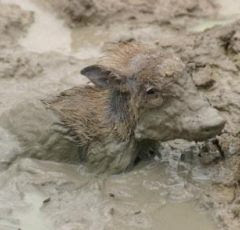Tall Grass Prairie
Perennial pastures are very effective for soil carbon sequestration and if you have perennial pastures, including long lived grasses, you can actually produce very high levels of meat and dairy production without having to depend upon the use of a lot of grain. Perennials are thrifty. Their long roots hold on to soil, water, and fertilizer, which means less pollution.
One inspiring source is Wes Jackson whose Commencement Address at University of Kansas last year focused on The Land Institute who's scientists have proved that agricultural landscapes that absorb greenhouse gases, protect soil, water, and air can feed us healthy foods reliably and profitably.
"Have you ever wondered," Wes asks, "why prairies thrive without any human intervention? No pesticides, no fertilizer, no irrigation, and yet they come back year after year, come drought or flood? Why the soil remains healthy, full of nutrients and swarming with organisms?" Simply put, it’s the complexity. Living things survive by taking advantage of resources as soon as they become available. A bared patch of soil doesn’t stay that way for long. (Reserving it for just one plant species – say, corn – takes a lot of chemicals and tillage.) In time, plants and organisms colonize the area, essentially divvying up available resources.
As The National Geographic article 'The Perennial Solution' says, "Annual grains feed the world, but they create problems." Restoring the globes 3.7 billion hectares of perennial grasslands is the best form of land use for putting carbon back into the ground – the way nature does it. Ploughing it up to grow grains (where that is even feasible) releases vast amounts of CO2 into the atmosphere.
Perfect complex sheep pasture according to Cornell Univ.




